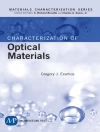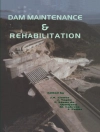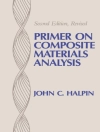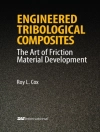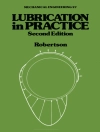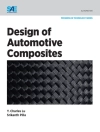This book presents the development of electrospun materials, fundamental principles of electrospinning process, controlling parameters, electrospinning strategies, and electrospun nanofibrous structures with specific properties for applications in tissue engineering and regenerative medicine, textile, water treatment, sensor, and energy fields. This book can broadly be divided into three parts: the first comprises basic principles of electrospinning process, general requirements of electrospun materials and advancement in electrospinning technology, the second part describes the applications of electrospun materials in different fields and future prospects, while the third part describes applications that can be used in advanced manufacturing based on conjoining electrospinning and 3D printing. Electrospinning is the most successful process for producing functional nanofibers and nanofibrous membranes with superior chemical and physical properties. The unique properties of electrospun materials including high surface to volume ratio, flexibility, high mechanical strength, high porosity, and adjustable nanofiber and pore size distribution make them potential candidates in a wide range of applications in biomedical and engineering areas. Electrospinning is becoming more efficient and more specialized in order to produce particular fiber types with tunable diameter and morphology, tunable characteristics, having specific patterns and 3D structures.
With a strong focus on fundamental materials science and engineering, this book provides systematic and comprehensive coverage of the recent developments and novel perspectives of electrospun materials. This comprehensive book includes chapters that discuss the latest and emerging applications of nanofiber technology in various fields, specifically in areas such as wearable textile, biomedical applications, energy generation and storage, water treatment and environmental remediation, and sensors such as biomarkers in healthcare and biomedical engineering. Despite all these advancements, there are still challenges to be addressed and overcome for nanofiber technology to move towards maturation.
Daftar Isi
1. Introduction and Fundamentals of Electrospinning.- 2. Fabrication Methodologies of Multi-Layered and Multi-Functional Electrospun Structures by Co-axial and Multi-axial Electrospinning Techniques.- 3. Solvent-free Electrospinning – Application in Wound Dressing.- 4. Melt Electrospınnıng Writing.- 5. Co-electrohydrodynamic Forming of Biomimetic Polymer Materials for Diffusion Magnetic
Resonance Imaging.- 6. Polysuccinimide and Polyaspartamide for Functional Fibers: Synthesis, Characterization and Properties.- 7. Electrospun Fibers in Drug Delivery.- 8. Suitability of Electrospun Nanofibers For Specialized Biomedical Applications.- 9. Biopolymeric Electrospun Nanofibers for Wound Dressings in Diabetic Patients.- 10. Biomedical Applications of Fibers Produced by Electrospinning, Microfluidic Spinning and Combinations of Both.
Tentang Penulis
Ashok Vaseashta, Prof. Dr. is CEO/CTO and Executive Director for research with the International Clean Water Institute in Virginia, USA. He also serves as a Professor at Riga Technical University, Chaired Professor of Nanotechnology at the Academy of Sciences of Moldova, Academician at Euro-Mediterranean Academy of Arts and Sciences, and a Senior Strategic Research Advisor for several organizations. Inspired by nature and guided by societal necessities, he strives for technological innovations to address the global challenges of the 21st century. His research interests include CBRN defense, critical infrastructure safety and security, and environmental sustainability – all using nexus of advanced technological solution platforms. He is a scholar, visionary, strategist, and dedicated futurist providing strategic leadership to promote and advance research initiatives and priorities using data-driven decisions. He received Ph.D. from the Virginia Polytechnic Institute and State University, Blacksburg, VA in 1990 followed by Kobe post-doctoral fellowship. Following his Ph.D., he served as a professor and researcher at Virginia Tech and Marshall University. He also served as the Director of Research at the Institute for Advanced Sciences Convergence and International Clean Water Institute for Norwich University Applied Research Institutes, Vice-Provost (Rector) for Research in South Carolina, Visiting Professor at the 3 Nano-SAE Research Centre, University of Bucharest, Romania and Visiting Scientist at the Helen and Martin Kimmel Center of Nanoscale Science at the Weizmann Institute of Science, Israel. He served the U.S. Department of State in two rotations, as strategic S&T advisor in the Bureau of International Security and Nonproliferation, Office of Weapons of Mass Destruction and Terrorism, and U.S. diplomat. His research interests span foresight, nanotechnology, environmental/ecological science, and critical infrastructure safety and security.He is the author/editor of 11 books and has published over 300 articles in scientific journals, book chapters, and conferences. He serves on editorial boards of several international journals and is an active member of various professional organizations.
Prof. Dr. Nimet Bolgen received B.S. degree in Chemical Engineering at Ankara University, Turkey in 2002, and M.S. degree in Chemical Engineering at Hacettepe University, Turkey in 2004. She received Ph D degree in Bioengineering at Hacettepe University, Turkey in 2008. She was visiting scientist at Sabancı University, Turkey; Lund University, Sweden; Institute of Polymer Science and Technology, Spain; and Keele University, United Kingdom. She has been working at Chemical Engineering Department, Mersin University, Turkey since 2009. She is the author of 13 book chapters, 45 articles, and more than 100 proceedings. Prof. Bolgen’s research is focused on the development of biomaterials for tissue engineering and regenerative medicine, drug delivery systems from natural and synthetic polymers, cryogels, and electrospun nanofibers for biomedical applications.


